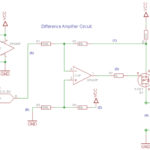Here, we review some common specifications for successive approximation register (SAR) and sigma delta analog to digital converters (ADCs.)

For converters, resolution is the number of bits per conversion cycle that the converter is capable of processing. For example, a converter with 12 bits of resolution is often referred to as “12 bits wide,” since 12 bits get processed in each conversion cycle. Higher resolution correlates to a slower conversion rate.
The accuracy of a converter refers to how many bits, from conversion to conversion, are repeatable. That is, accuracy reflects how true the ADC’s output reflects the actual input. Accuracy is determined by the DC specifications for gain, offset, and linearity (integral nonlinearity and differential nonlinearity). The accuracy as stated in the datasheet will always be equal to or less than the resolution of the converter, with most experiences in the “less than” category. A common experience is to see a solid conversion of several bits wide with an unpredictable, nonsensical behavior from the last, or least significant bits (LSB). The ADC still has a resolution as advertised, but accuracy suffers with the LSBs. How “your mileage may vary” has to do with protecting and filtering input signals from noise, protecting the reference voltage to the ADC, and the reputation of the manufacturer. According to STMicroelectronics, accuracy is affected by parameters associated with “PCB layout, voltage source, I/O switching and analog source impedance.”[i] Improving the quality of the measurements can be achieved by placing a gain stage just ahead of the ADC input, a common tactic.

Repeatability is not the same thing as accuracy, although they can seem to be related. Repeatability is how well the converter produces the same data from one conversion to the next. Surrounding circuitry to reduce or eliminate noise is the best start to ensuring repeatability. Once repeatability is established in your circuit with steady-state tests, then accuracy can likewise be established. Look at AC specifications to help with determining repeatability (not accuracy), including the effective resolution (ER), signal-to-noise ratio (SNR), signal-to-noise plus distortion (SINAD), effective number of bits (ENOB), or noise-free resolution tell us about the ADC’s claims to repeatability in a datasheet. For more information on what these specifications mean and how to apply them, refer to Maxim Integrated’s Application Note 5384, “Understanding Noise, ENOB, and Effective Resolution in Analog-to-Digital Converters.”
Throughput rate (or data rate) for ADCs refers to the amount of time that it takes to complete a whole conversion. A whole conversion includes the time that it takes to setup, sample, convert and transmit the data. Common sense holds true in that the higher the throughput rate, the lower the resolution across converters.
In general, the SAR converter has a faster throughput rate than the sigma-delta converter, although there is some overlap in capability. However, the sigma-delta converter has a reputation for higher accuracy in exchange for a slower conversion speed, or throughput rate, in part because it samples the input signal multiple times and applies noise-reduction techniques to improve the SNR ratio and resolution. Sigma-delta ADCs require a continuous clock, and thus may not be suitable for portable, battery-powered applications. More ADCs are starting to have shut-down features.
[i] MCU Applications Division. UNDERSTANDING AND MINIMISING ADC CONVERSION ERRORS. STMicroelectronics, 2003. Web. 30 Dec. 2016.


